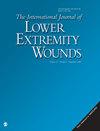Sub-ulcer Foam Sclerotherapy in Patients with Venous Leg Ulcer, Analysis and Technical Aspects of 134 Consecutive Patients
IF 1.5
4区 医学
Q3 DERMATOLOGY
引用次数: 0
Abstract
ObjectiveFor this retrospective study, we analyzed the sub-ulcer foam sclerotherapy technique in patients with venous leg ulcer (VLU).MethodsThis study included 134 patients treated with sub-ulcer foam sclerotherapy at the Oulu University Hospital vascular outpatient clinic from January 2012 to December 2021. All included patients received sub-ulcer foam sclerotherapy as part of the treatment strategy for superficial venous insufficiency. Compression therapy and local wound care were organized for VLU treatment. A follow-up visit was scheduled for one month after the sub-ulcer foam sclerotherapy. Change in ulcer size, local (skin necrosis, infection) or systemic (deep vein thrombosis, pulmonary embolism) complications, and time to ulcer healing were monitored. The occurrence of major limb-related complications (amputation, surgical revision) was monitored for one year postoperatively.ResultsOne month after sub-ulcer treatment, ulcers were smaller or completely healed in 108 (81%) patients. Ulcer healing was completed in 123 (92%) patients at one year and 131 (98%) patients at two years. Complications were recorded in four (3%) patients, three (2%) who were diagnosed with erysipelas requiring antibiotic treatment and one (1%) patient diagnosed with local dermatitis. During the one-year follow-up, no major limb-related complications (surgical revisions or amputations) arose.ConclusionsSub-ulcer foam sclerotherapy may be a feasible addition to superficial vein reflux elimination in patients with VLU and a low risk for complications.静脉腿部溃疡患者的溃疡下泡沫硬化疗法,134 例连续患者的分析和技术问题
本研究纳入了 2012 年 1 月至 2021 年 12 月期间在奥卢大学医院血管门诊接受溃疡下泡沫硬化疗法治疗的 134 名患者。所有纳入研究的患者均接受了溃疡下泡沫硬化疗法,作为浅静脉功能不全治疗策略的一部分。在 VLU 治疗过程中,还组织了加压疗法和局部伤口护理。溃疡下泡沫硬化剂治疗后一个月进行随访。对溃疡大小变化、局部(皮肤坏死、感染)或全身(深静脉血栓、肺栓塞)并发症以及溃疡愈合时间进行监测。结果 溃疡下治疗一个月后,108 名(81%)患者的溃疡缩小或完全愈合。123 名患者(92%)的溃疡在一年后完全愈合,131 名患者(98%)的溃疡在两年后完全愈合。有四名患者(3%)出现并发症,其中三名(2%)被诊断为红斑狼疮,需要接受抗生素治疗,一名(1%)被诊断为局部皮炎。在一年的随访中,没有出现与肢体相关的重大并发症(手术翻修或截肢)。结论溃疡下泡沫硬化剂疗法可能是消除VLU患者浅静脉回流的一种可行的补充方法,而且并发症风险较低。
本文章由计算机程序翻译,如有差异,请以英文原文为准。
求助全文
约1分钟内获得全文
求助全文
来源期刊

International Journal of Lower Extremity Wounds
DERMATOLOGY-SURGERY
CiteScore
4.60
自引率
17.60%
发文量
95
审稿时长
>12 weeks
期刊介绍:
The International Journal of Lower Extremity Wounds (IJLEW) is a quarterly, peer-reviewed journal publishing original research, reviews of evidence-based diagnostic techniques and methods, disease and patient management, and surgical and medical therapeutics for lower extremity wounds such as burns, stomas, ulcers, fistulas, and traumatic wounds. IJLEW also offers evaluations of assessment and monitoring tools, dressings, gels, cleansers, pressure management, footwear/orthotics, casting, and bioengineered skin. This journal is a member of the Committee on Publication Ethics (COPE).
 求助内容:
求助内容: 应助结果提醒方式:
应助结果提醒方式:


